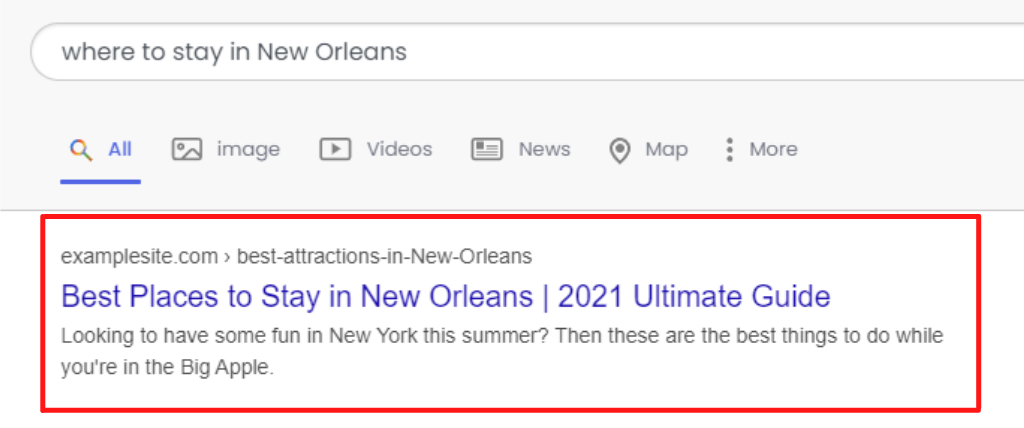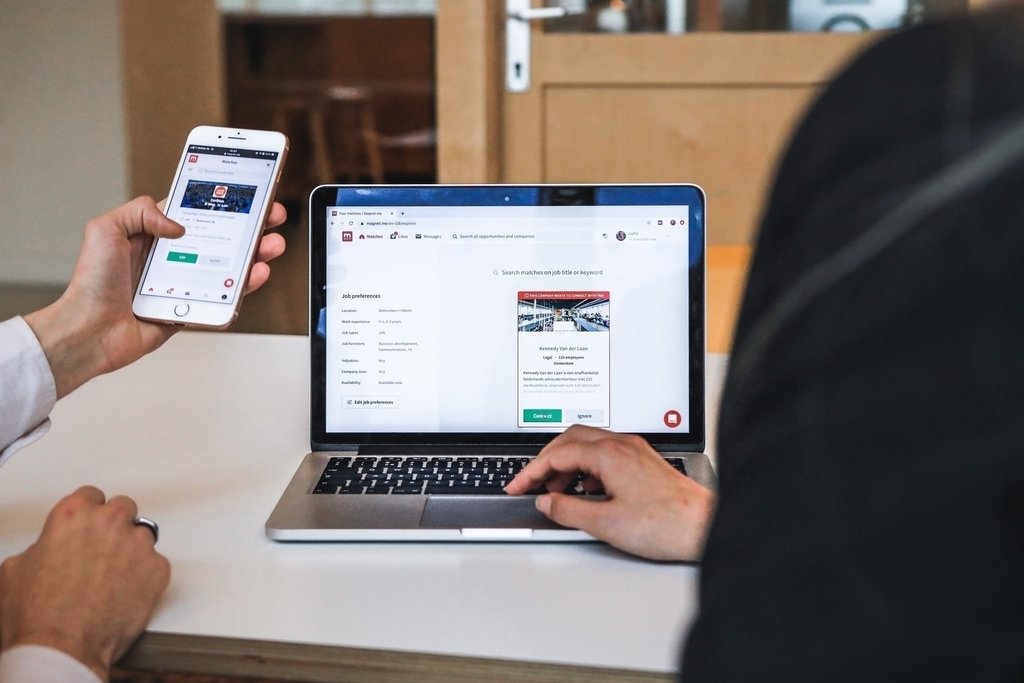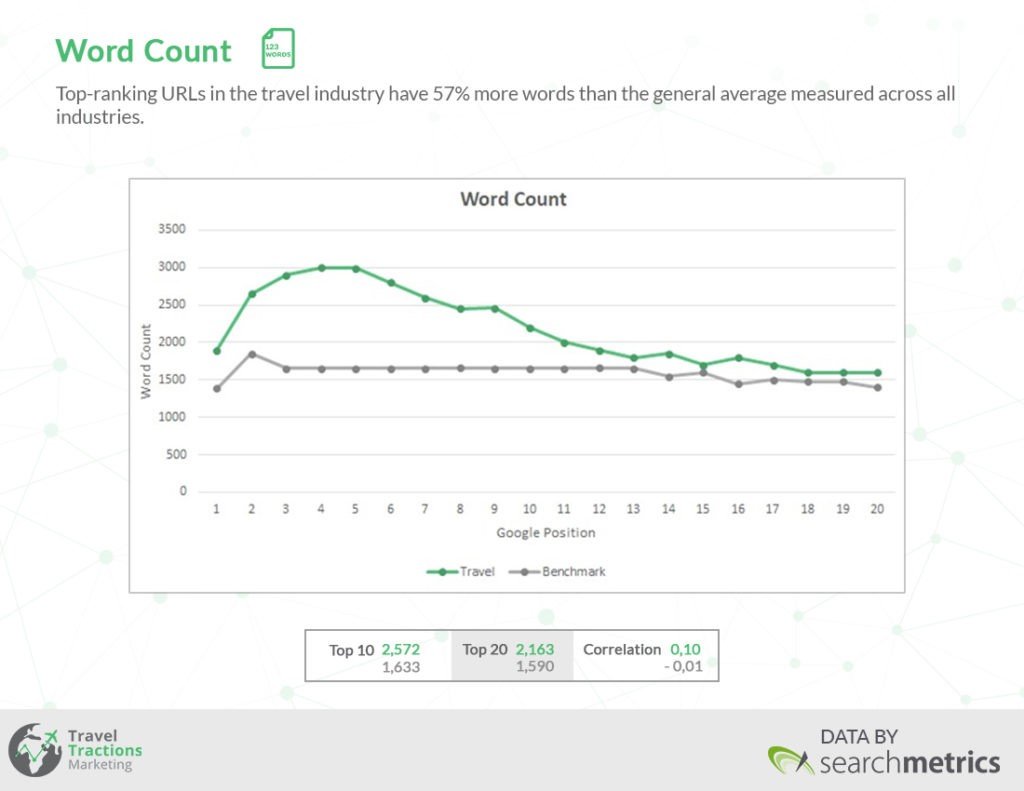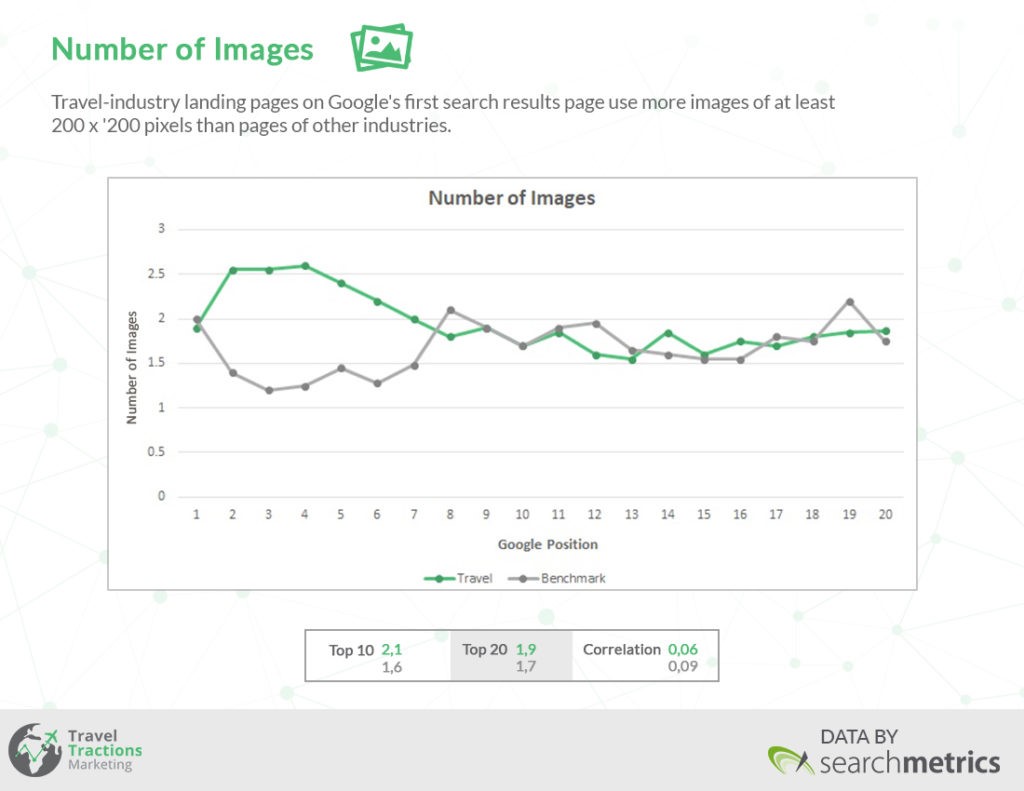

Travel Website SEO | How To Improve Your Site’s Performance
Struggling to increase organic traffic to your travel blog? Or are you finding it hard to increase online bookings for your travel website? The issue might be your travel website SEO – or lack thereof.
In today’s digital era, most people’s travel experiences begin with a simple engine search through Google and other search engines. If your website isn’t optimised correctly, you’re practically invisible to millions of eyes that are looking for what you have to offer.
So how do you increase traffic to your website and rank higher on search engines? Through implementing the best search engine optimisation (SEO) practices. Don’t worry if you aren’t familiar with the term; you’ll learn all about it below.
What Is Travel Website SEO and Why Is It Important?
Search Engine Optimization (SEO) is used to optimise website pages and improve their positioning and visibility on search engine result pages (SERPs). We’ll be using Google as the reference in this guide since it accounts for over 85% of all searches.
SEO is how Google decides who to rank where for any search performed by an individual. While there isn’t a formula that’s 100% correct, you won’t go wrong by focusing on these SEO ranking factors.
So, what’s the importance of travel industry SEO? Websites that appear on the first page of Google get over 70% of all clicks. The goal of all travel industry members is to ensure those clicks are going to their websites.
See where this is going? Regardless of how impressive your website and its contents are, you need a great SEO strategy. This goes for both on-site and off-site SEO (more on this later), or else you’ll be losing out on 90% of your target audience.
How to Improve SEO for Travel Websites
Now that you’re clued up on the importance of SEO for travel blogs, booking sites, and everything in-between, you need to know how to improve it.
Don’t worry; you don’t need to be an expert to improve your rankings – although, getting help from an SEO specialist does help. You can follow many steps to enhance travel website SEO, and you can learn about all of them below.
On-Site SEO for Travel Website
On-site SEO is probably what most people think about when they hear the term “SEO.” It refers to optimising several elements on a website to get more traffic and improve your ranking on Google.
On-site SEO is primarily focused on two things. One is relevance, and the other is user experience. These two elements matter for practically any landing page on a site.
Landing Pages
Landing pages act as your site’s best pages to target specific keywords. For the travel industry, there are a variety of ways to travel and subsequently, there are websites for each. From cruises, flights, ferries, and car rentals sites, it’s important to have pages that target your main keywords.
Building a web of well-thought out landing pages is important for ranking on search engines. Keep the language simple and use images to make the page as attractive as possible to catch the user and entice them to book.
Relevance
Relevance helps Google understand what your website or page is about and who it’s targeting. This allows the search engine to choose which search queries your website will show up for.
Google establishes relevance using various signals. These primarily include the URL structure, the page title, meta description, media tags or alt text, and headings.
The most successful websites use these components to ensure Google understands precisely everything there is to know about the page.
The URL and page title (or title tag) indicate to Google what the page is about and must be identical to ensure optimal performance. Your website’s headings can further help in this regard, but they must relate to the title.
Meta descriptions are small snippets that appear on a SERP underneath the title and give searchers insight into the page’s contents. Alt text refers to the naming of any media on your site as search engines can’t identify media unless it’s named.
For example, look at this fake comical search result that showcases what not to do:
As you can see, the title tag, URL, and meta description aren’t at all related. This confusion simply means Google won’t recommend the website to anyone because they aren’t sure what topic the page is talking about.
Improving Relevance
The main way to improve relevance is by using keywords and doing keyword research. Keywords and content are the backbone of travel SEO as they indicate what people use to search for answers to their queries. Using travel keywords is one of the top ways to increase traffic to your blog or booking page.
For example, common keywords for travel and tourism include “what to do in X” and “where to stay in X”, with “X” being the destination.
These keywords inform the content of your website as you want to answer your potential customers or readers’ queries. You can find target keywords via keyword research, which is offered by many renowned tools like Ahrefs and SEMrush, or free ones like Ubersuggest.
Once you’ve selected your keywords and written your content or website using them, you then implement them to optimise the signals.
Your target keyword will be the page title and should optimally be near the beginning of your page titles. Remember to make sure it’s friendly to both humans and search engines.
Likewise, your target keyword has to appear in the URL with hyphens between each word. Just be sure to remove stop words like if, with, for, etc.
Further, your meta description should ideally include the target keyword. Just beware to avoid keyword stuffing, as Google can punish you for this.
User Experience
The other part of on-page SEO for travel agencies, bloggers, and tour sites is user experience. Search engines want to ensure their users continue to have a great experience when they visit your website.
How does Google determine user experience when their bots aren’t human? Easy, they look at certain indicators that let them know how good or bad a page is.
Analytics Data
Firstly, Google looks at your website’s Analytics data to track all user behaviour on your website. Of course, this is assuming that you have it installed. The search engine looks at the time users spend on a page, the bounce rate, and the number of page views.
Time on page is self-explanatory as it measures how long users stay on the page they landed on. If users spend just seconds on your page during their sessions, that tells Google they had a bad experience. Or that your page was irrelevant to the user search query.
The bounce rate refers to how many users land on your website and leave without doing anything. Bounce rates are often affected by poor usability, technical errors, poor-quality content etc.
Number of page views simply refers to how many pages a user views during their session. If most users view a single page on your website, that signals to Google that something is amiss.
Tracking conversions and events are a great way for you to visualise the user experience, mostly using the behavioural flow. Users constantly clicking back and forth between pages indicates confusing navigation, visiting unexpected pages might mean you don’t have what they want. Further, if the conversion difference between mobile and desktop is large, it might be worth further optimising your site for mobile.
Page or Website Load Speed Time
Most people aren’t patient, and if a website takes longer than a few seconds to load, they’ll leave. As such, Google tracks websites’ load speed, so sites that take longer to load fully are considered as providing a bad user experience.
Nearly half of all websites load in 3 seconds or less, and the top 5% of websites load in just under a second. As you can see, that doesn’t leave much opportunity for slow websites to thrive.
You can test your website’s loading speed with various tools, with Google’s Page Speed Tool being the most popular.
As for improving load speed, this can be pretty difficult if you aren’t too well-versed in performing these actions technically. It’d be better to have professional optimisers helping you out.
Make Your Website Mobile-Friendly
Mobile devices make up around 54% of all web traffic as most people own a smartphone. This means your website has to be optimised for mobile devices, or your visitors will have a bad experience.
To ensure that your site is optimised for mobile, you can use Google’s free mobile-friendly test.
Off-Page SEO for The Travel Industry
Off-page SEO refers to actions taken outside your travel website to influence your rankings on SERPs. You do this part of travel search marketing by improving the perception of your website to users and search engines.
Off-page SEO is primarily focused on building backlinks, which refers to other websites linking back to your pages. This signals to search engines (and users) that your website is high-quality, and functions like word-of-mouth in brick-and-mortar businesses.
Furthermore, getting backlinks from highly authoritative sites is the best way to improve Google’s perception of your website. You can measure a website’s authority using either Ahrefs’ “Domain Rating” or MOZ’s “Domain Authority.”
For example, Forbes “vouching” for your website has more SEO value than a brand new blogger linking to your website.
There are two types of backlinks that dominate off-page SEO. These are natural links and manually-built links.
Natural links are those your website earns organically without any external influence from your end. Manually-built links are backlinks acquired through link building activities like asking others to share your content, writing a guest post, answering forum questions, etc.
How Content Affects Travel SEO
Quality travel website content is the driving force behind SEO efforts. If the content isn’t great, the SEO techniques above would struggle to help you grow your website.
Google assesses the quality of content based on Expertise, Authoritativeness, and Trustworthiness (E-A-T). Further, your content has to be relevant, unique, and serve an actual purpose.
Expertise refers to the content creator and their knowledge of the subject they write about. Some pages require less formal expertise if the creator is sharing personal experiences.
Authoritativeness refers to the authority of the website the content is found on. This can be proven primarily by backlinks to your website through great sources, essentially proving what you have to say is informative.
Trustworthiness refers to how reliable the information on your website is.
Unique content is anything that isn’t duplicated or stolen from one website to the other. It’s also beneficial to have your content be as non-generic as possible.
Creating and Optimising Your Content
As already stated, content is the heart of SEO for travel agents, bloggers, property pages, and more. While it isn’t a direct ranking factor, it influences all the major ranking signals Google uses to assess website value.
For instance, bad content always leads to higher bounce rates, lower page views and time spent on the page. So, even if the site is perfectly functional, Google may look at that as a bad user experience. You also have to make sure you know your audience and how to write for them.
Further, content quality plays a prominent role in off-page SEO for a travel agency, blogger, and other tourism websites. Generally, no website will link to bad content as it reflects negatively on that website, and readers are more likely to share high-quality posts.
In addition to creating new, unique, and relevant content, optimising your old content is one of the best practices of SEO for travel bloggers and different travel businesses.
Optimising Content
You can use Google Search Console to see which pages are underperforming and have a chance of ranking well in the search results. Look at the keywords that bring in many impressions and clicks and insert them into the existing content.
High ranking pages positioned near the top 10 have a better chance to shoot up the rankings.
Additionally, you’ll want to ensure that all the information on the page is up to date. This will affect both on-page and off-page SEO. Plus, fill in the content gaps that may have been previously missing from outdated posts.
While this may be a time-consuming activity, you can outsource to professionals who provide travel SEO services if you have a ton of pages to optimise.
Other Tips for Improving Travel Website SEO
While the above is at the core of improving tourism SEO, there are other smaller ways to improve performance on the search engine results page.
Use Breadcrumbs
A breadcrumb appears at the top of a page and gives users and search engines an easy way to go back to other pages. They’re important for both user experience and SEO purposes as it indicates to Google that the site has a content cluster of related topics (more on that below).
For example:
Homepage > Destinations > New Orleans > Things to Do
Creating Content Clusters
Content clusters refer to creating interrelated content on a certain topic, which you connect using internal links. Search engines look at each page in relation to the website, meaning it’s best to have various pieces of content around one topic.
For example, you may create a category page dedicated to one destination and then create various guides for the area which have internal linking to other related pages.
Images
Every good travel website features a number of images in its content, be it a booking site, blog, or tours site. These images have to be of great quality as they help the reader get a visual gauge of what to expect at the destination.
Furthermore, nice images help websites in general as travel sites with images tend to rank higher according to research. Well-optimized images with appropriate alt text also help potential customers easily find you if they conduct a Google Image Search.
Summary on Travel Website SEO
As you probably know now, SEO is one of the cornerstones for the success of any travel website. Whether you want to make money travel blogging or secure more bookings for your travel company, you need to perform SEO.
Scratch that; you need to perform good SEO. Your search engine marketing strategy needs to ensure you stay on the right side of the above ranking factors. Using keywords to create great content, link building, and improving user experience is crucial to ranking well.
Just keep in mind that SEO is a long-run process that won’t always bring in immediate results. But you’ll surely conquer the search engine ranking game if you keep in line with the necessary factors.


















